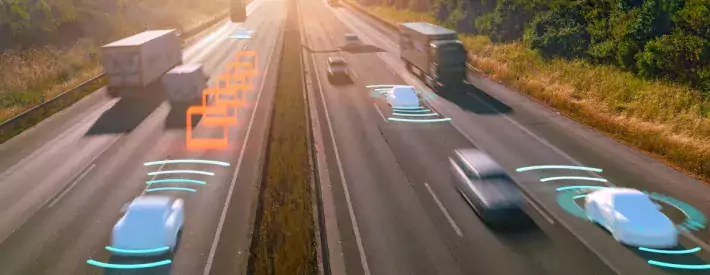Why ADAS skills are the next big industry challenge

Automotive is moving through a period of revolution as vehicles becoming electrified, connected and increasingly able to control elements of the driving process.
Thanks to the integration of advanced driver assistance systems (ADAS) vehicles can now not only control longitudinal movements but also more dynamic lateral manoeuvres too. Think adaptive cruise control, lane change, automatic emergency braking and lane centring.
These function are controlled by a range of onboard sensors that give vehicles a picture of their surroundings; ultrasonic, radar, camera, and recently lidar sensors all provide environmental data.
It’s an area of development the IMI is paying close attention to because as the technologies become more widespread, the need to stay on top of skills will become critical.
According to the IMI’s IMI ADAS Report as of the end of 2022, 5% of the UK car parc has some degree of level 2 autonomy. This is set to rise rapidly over the next decade as all new vehicles as of July 2022 are mandated (EU regulation) to include several safety components, a number of which include Level 2 autonomy. The IMI forecasts that 44% of the UK car parc will have level 2 autonomy by 2030.
The accelerated uptake of ADAS systems on the road to fully autonomous vehicles could lead to a skills shortage that the industry needs to address sooner rather than later.
“The IMI estimate that by the end of 2022, there will be 3000 technicians ADAS qualified in the UK. This highlights that there is already a skills gap when considering the number of cars with level 2 autonomy compared to the number of technicians qualified. This gap is currently in the region of 3000 to 9000 technicians and is set to increase to 51,000 by 2030. To meet the demand of 44% of the UK car parc having level 2 autonomy by 2030, we estimate that the sector will require 106,000 technicians qualified to work with vehicle with ADAS by 2030,” says Emma Carrigy, Research & Insight Manager at the IMI.
It’s a position echoed by Thatcham Research, especially as more advanced sensor technology – lidar – takes hold in the market as we move beyond even level 2 automated driving to fully self-driving vehicles.
The calibration of lidar sensors, especially in conjunction with other sensors like cameras, remains a crucial and significant challenge. "Car makers and sensor manufacturers are actively working on calibration procedures to ensure the accuracy and reliability of lidar systems across various vehicle models. However, the number of qualified personnel available to service this equipment isn't appropriate for the technology to become rapidly widespread,” says Tom Leggett, Vehicle Technology Specialist, at Thatcham Research.
But there is no sign that vehicle manufacturers are going to slow the introduction of sensor technologies, so the sector needs to react and increase the skills across the industry, closing any future gap in knowledge.
The ADAS skills requirements almost mirrors the challenge found in getting automotive prepared for the increase in electrified vehicles. The sooner businesses invest in upskilling their workforce the better prepared they’ll be for the future.
Time to find out more? Read the IMI’s ADAS Report now and check out the courses and qualifications on offer to get your skills up to date




